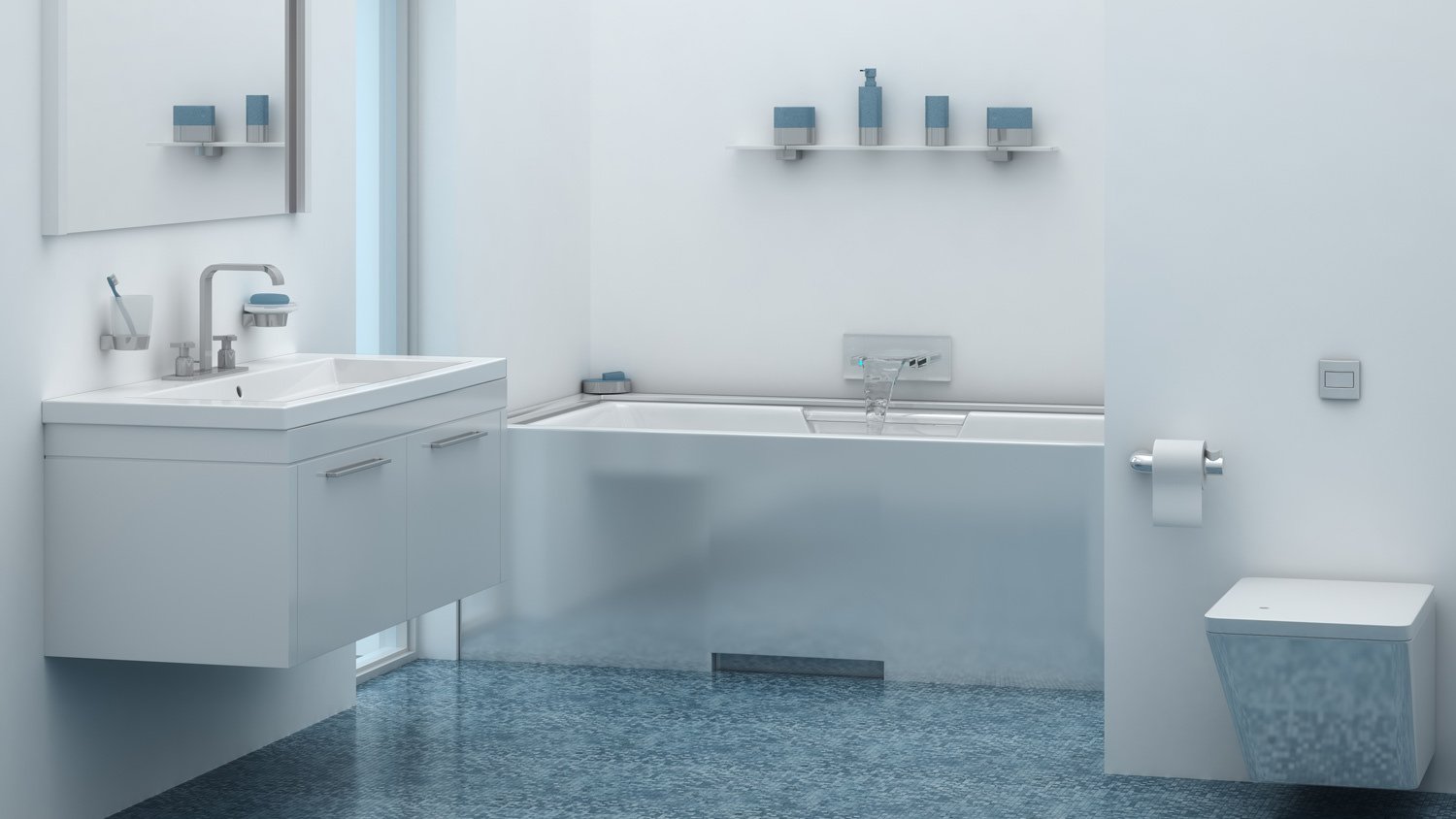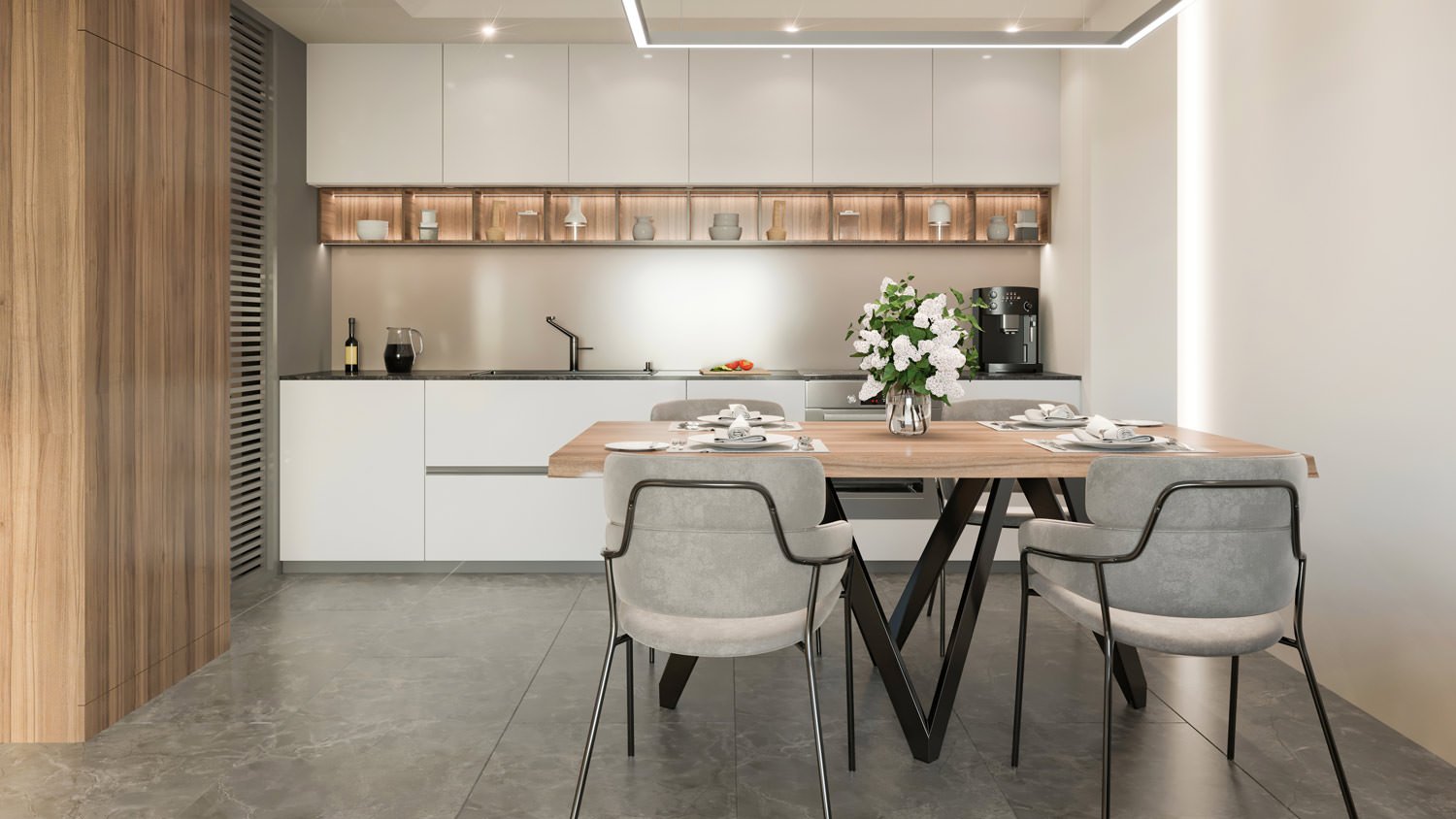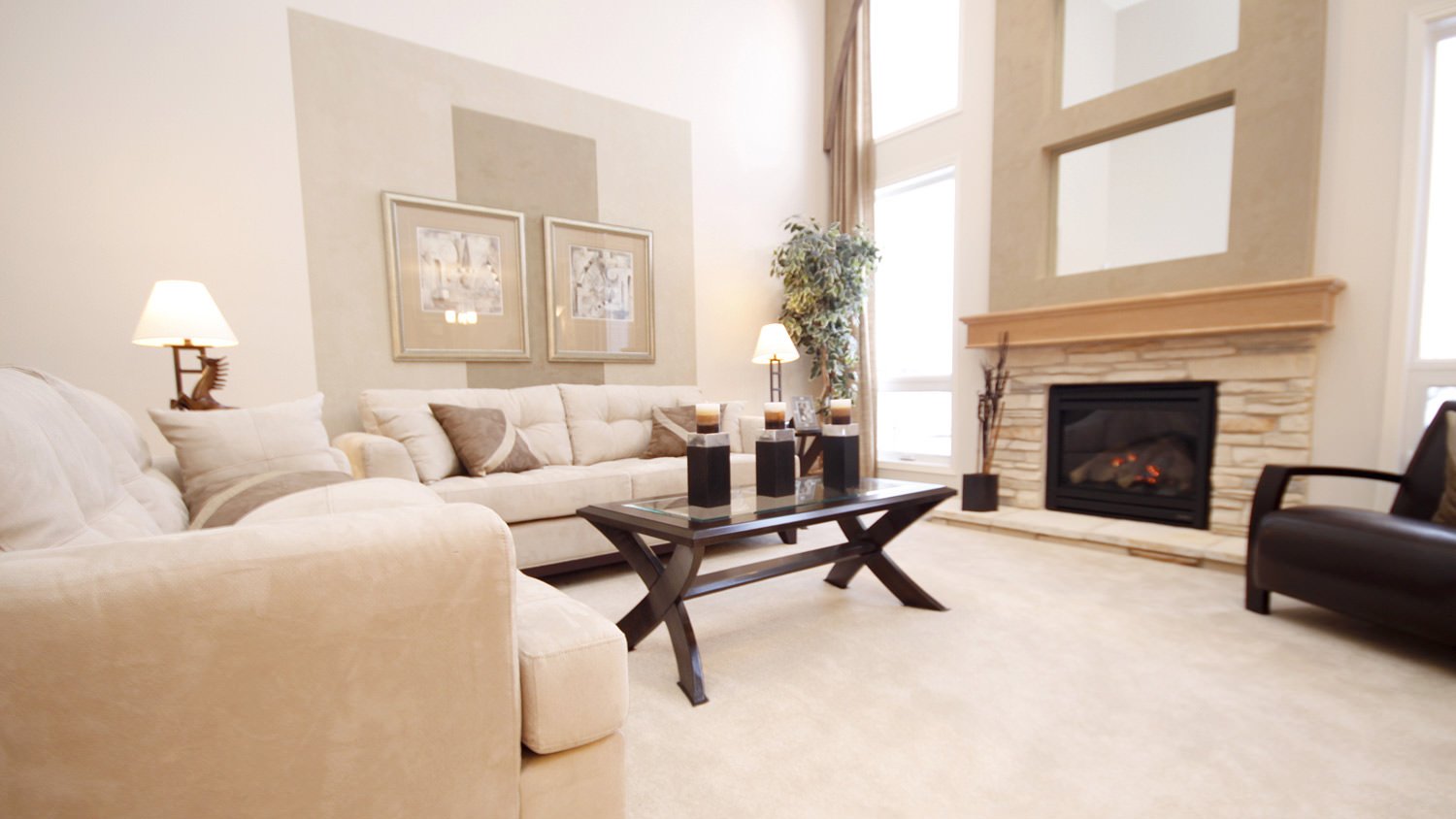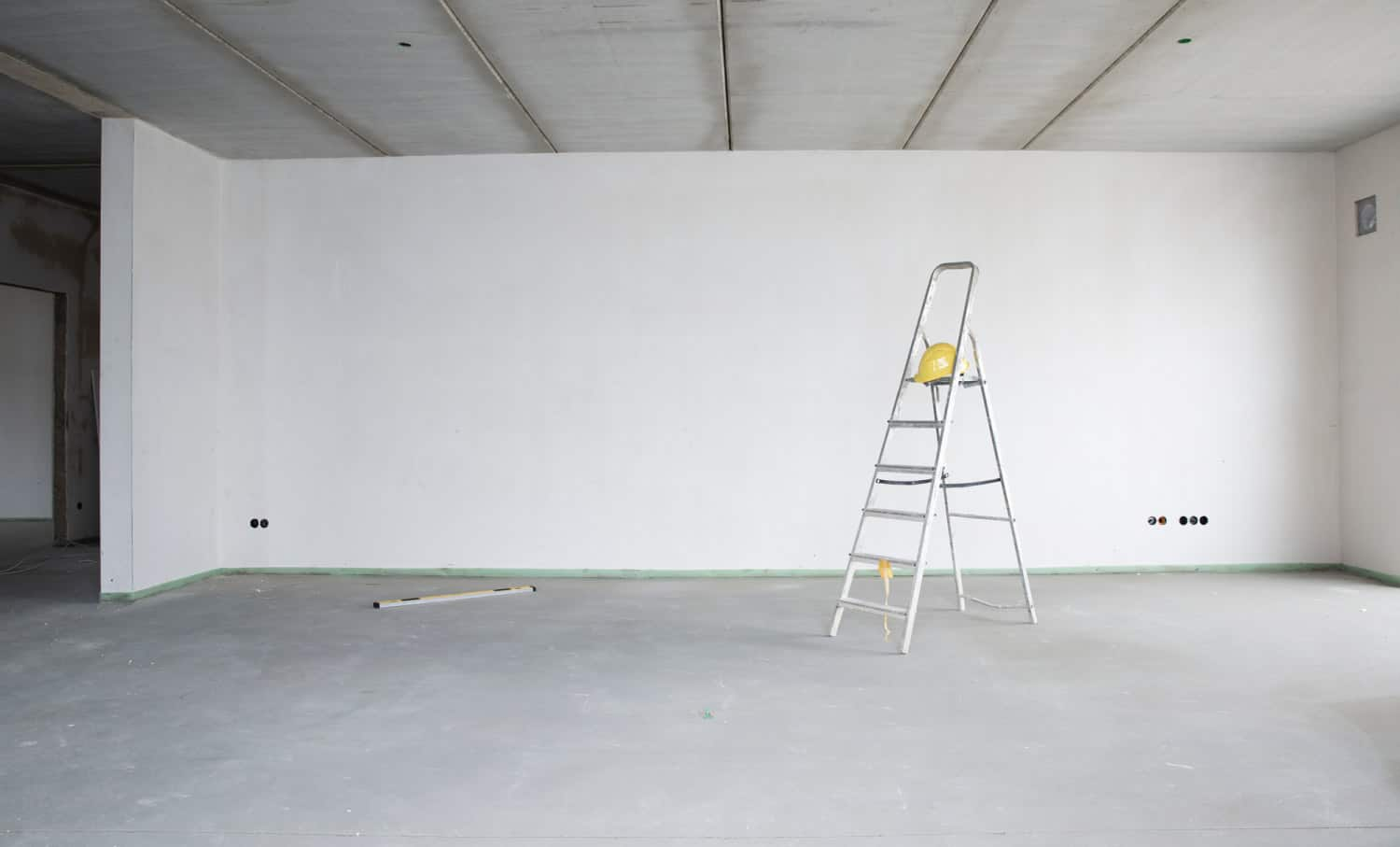6 Inexpensive Flooring Options That Look Good and Save You Money
You're going to be floored by these affordable flooring options


Inexpensive flooring options are plentiful if you know what to look for. Vinyl and laminate are some of the most budget-friendly flooring options available, but they’re by no means the only affordable choices. Check out our top six low-price flooring materials and tailor your design to your personal taste, DIY skills, and budget.
1. Vinyl Flooring

Vinyl flooring holds up well in high-traffic areas like kitchens, entryways, and bathrooms, and is available in a wide range of patterns and colors. Vinyl often mimics hardwood, stone, and high-end tiles, but without the higher cost.
| Pros | Cons |
|---|---|
| Affordable | Cannot be refinished |
| Easy to Install | Lower ROI |
| Resilient | Environmental concerns |
| Soft | May emit VOCs |
| Sound dampening | Entire floor must be replaced if damaged |
Best for: High-traffic rooms such as kitchens or bathrooms
Lasting 15 to 25 years, vinyl flooring is durable, water resistant, and stain resistant. However, extreme heat and sharp objects can damage it, and it can fade in direct sunlight over long periods. Available in sheets or planks that snap together, you can install vinyl yourself as a moderate DIY project or hire a vinyl flooring installer near you.
On average, sheet vinyl costs $1.00 to $2 per square foot. Luxury vinyl planks cost $2.50 to $5 per square foot, and luxury vinyl tiles cost $2.50 to $5 per square foot. On average, the cost of vinyl flooring installation ranges from $3 to $10 per square foot on top of materials.
2. Laminate Flooring

Laminate flooring mimics wood but is less expensive and offers an incredibly durable, easy-to-maintain surface. Like vinyl, laminate is great for high-traffic rooms like kitchens and is stain resistant.
| Pros | Cons |
|---|---|
| Affordable | Not waterproof |
| Durable | Cannot be refinished |
| Easy to install | Synthetic material |
| Better quality than in previous years | Repetitive patterns |
| Can be eco-friendly | Many types are not eco-friendly |
Best for: Living rooms, bedrooms, and hallways
You can install laminate planks yourself if you are an experienced DIYer, or you can find a local laminate flooring installer to handle the job. Laminate lasts 15 to 25 years, but gets damaged if exposed to standing water and can be difficult to repair.
The average cost of laminate flooring ranges between $3 and $13 per square foot, including materials and labor.
3. Linoleum Flooring

Natural linoleum has been around for over 150 years, but it has improved greatly in quality. It comes in colorful sheets or tiles that snap together, but can be more difficult to install than vinyl.
| Pros | Cons |
|---|---|
| Affordable | Not good for DIY |
| Easy to maintain | Susceptible to dents |
| Variety of colors and patterns | May discolor over time |
| Water-resistant | Not waterproof |
| Eco-friendly | Needs regular resealing |
Best for: Kitchens, bathrooms, and playrooms
While linoleum holds up to everyday wear and is scratch resistant, it is not as durable as laminate and vinyl—but it makes up for that in softness and warmth. You may need to reseal the floor every two to three years, depending on whether it comes with a built-in top coat or not, but with proper care and maintenance, linoleum lasts 25 to 40 years.
On average, linoleum flooring costs $3 to $12 per square foot, including labor. Linoleum sheet installation is better left to an expert. The most widely available brand in the U.S. is European-made Marmoleum by Forbo.
4. Concrete Flooring

In a kitchen, mudroom, or basement, concrete can be stained and polished to make a beautiful floor. Lasting 50 to 100 years or more, concrete is incredibly long-lasting and durable.
| Pros | Cons |
|---|---|
| Durable | Hard |
| Low maintenance | Cold |
| Affordable | Sucks moisture from ground |
| Compatible with radiant heat | Susceptible to cracks |
| Customizable | Manufacturing process emits high levels of CO2 |
| Healthy to live with | Can be tough to design around |
| Can be lower-impact | Not good for DIY |
Best for: Basements, kitchens, additions, and homes with pets
You will likely want to hire a professional concrete contractor for the installation, and you should know that some cracks over time might need repair. Though concrete is a hard, cold surface, you can install radiant heat or add rugs to the space to soften and warm it.
Polished concrete costs $2 to $16 on average per square foot, including installation. Basic designs fall on the lower end, while elaborate patterns and coloring top the range.
5. Cork Flooring

Cork flooring comes in tiles or planks and a variety of finishes, colors, and patterns. It is comfortable on the feet and prevents heat loss. Unlike vinyl and laminate, cork can be refinished like hardwood but is more budget-friendly than hardwood floor prices.
| Pros | Cons |
|---|---|
| Easy to install and maintain | Some finishes and sealants may emit VOCs |
| Hypoallergenic | Susceptible to denting |
| Can be refinished | May fade |
| Soft underfoot | May stain easily |
| Eco-friendly | Requires frequent resealing |
Best for: Living rooms, bedrooms, dining rooms, and playrooms
Cork flooring lasts approximately 15 to 40 years, depending on the quality of installation, maintenance, and traffic.
While easy to maintain and clean, cork can be damaged by sharp objects or heavy furniture. You will also need to reseal it every few years to ward off water damage.
On average, cork flooring costs $3 to $6 per square foot. Installation adds approximately $2 per square foot, depending on the cost of flooring installers in your area.
6. Carpet and Carpet Squares

Carpet is a soft, beautiful flooring option that insulates the ground and dampens noise. Best for bedrooms, living rooms, and playrooms, carpet does better with minimal water exposure.
| Pros | Cons |
|---|---|
| Affordable | Requires regular cleaning and maintenance |
| Many options | Not water-resistant |
| Comfortable underfoot | Not as long-lived as other flooring |
| Quiet | Susceptible to stains |
| Less waste | May worsen allergies |
Best for: Bedrooms, living rooms, and playrooms
Carpet is not as durable as some other flooring types and will need to be replaced every five to 15 years. There is a wide range of colors and designs available, allowing carpet to fit many home styles.
Carpet ranges from $3 to $11 per square foot, with carpet tile squares being on the lower end at $1.50 to $3.50 per square foot. Local carpet installers charge between $0.50 and $1 per square foot to lay new carpet, depending on the complexity of the room and your geographical location. Also, don’t forget about selecting the right carpet pad to go underneath.
Top Tips to Reduce Flooring Costs
Beyond choosing a budget-friendly flooring option, here are the best tips for cutting costs and still getting a stunning result.
1. Assist With the Labor
If you hire a local flooring contractor to install your floors, talk with them about what you can do to reduce costs, such as preparing the area and subfloor or helping with clean-up or sealing.
2. Look and Wait for Discounts
Decide on what flooring you want, such as vinyl plank flooring, then keep an eye out for sales and seasonal deals. Many flooring dealers and installers run specials during the off-season, which is October through March.
3. Be Flexible on Style
Consider a different color or pattern for your flooring if the materials are significantly less expensive.
4. Shop Smart
Look for the best flooring deals at home improvement, flooring, and carpet stores. Shop around for different styles and prices. Your flooring contractor might also be able to get a discount on your flooring materials, so wait to purchase them until you have found your contractor.
5. Consider Overstock, Reuse, and Remnant Stores
If you are not too picky about brand, style, or color, look at local overstock, reuse, and remnant retailers. These stores stock flooring and other building materials purchased from manufacturers and flooring stores or leftover after other jobs. Because styles and amounts are limited, the prices are often much lower than list prices.
6. Cover Multiple Areas With the Same Flooring
If you are redoing the floors in adjacent rooms or the whole main floor of your home, consider using the same flooring across it all. Transitions will be easier, you will not have as much wasted material, and your installer can work more quickly, reducing labor costs.
7. Refinish Your Current Floors
Depending on the type of flooring you already have and the condition it is in, get quotes from local contractors on refinishing your current floors or repairing trouble spots. Sometimes refinishing work ends up being less expensive than replacing the whole floor.
8. Consider a Large Area Rug Instead
Want to cover up your damaged hardwood or old linoleum? Consider purchasing an area rug for the center of the room. Rugs and mats can be a cost-effective way to essentially have a new floor without the construction, time, or cost.
Lauren Bongard contributed to this piece.
Frequently Asked Questions
Sheet vinyl is among the most affordable flooring options, and it’s very durable, too. You can buy sheet vinyl for as low as $0.50 per square foot, and it can last you 10 to 20 years. After sheet vinyl, laminate flooring is the next most cost-friendly flooring option, with prices ranging from $1 to $6 per square foot. Other inexpensive but durable options include linoleum, carpeting, and concrete, each of which can be purchased for as low as $2 per square foot.
Sheet vinyl is the cheapest DIY flooring, depending on the brand, style, and quality you choose. Not only is it one of the most affordable flooring products on the market, but it is also easy for most homeowners to install, as it only requires cutting, trimming, and gluing down to the existing floor surface. Some sheet vinyl manufacturers make a loose-lay sheet vinyl flooring that does not even need to be glued.
Carpet squares, tile stickers, painting or stenciling existing tile floors, and painting existing concrete flooring are also affordable options for DIY flooring.
Concrete flooring, particularly sealed concrete, is the lowest maintenance flooring available. It is affordable, durable, and can last more than 100 years if you seal it and care for it. Far from just being a boring gray, you can stain, stamp, and even paint concrete to match your style and decor. If concrete is not your thing, consider ceramic tile flooring. It is waterproof, stain resistant, and perfect for wet rooms like kitchens and bathrooms. Luxury vinyl tile also requires very little care; it is water and stain resistant, very durable, and affordable.




- 11 Types of Flooring to Consider for Your Home
- 7 Budget-Friendly Kitchen Flooring Options for Every Style
- The Best Flooring Options for Dogs: A Complete Guide
- 6 Options For Improving Your Attic Flooring
- 7 Types of Flooring That Can Be Laid Over Carpet
- Laminate vs. Vinyl Flooring: Pros, Cons, Costs, and More
- 15 Great Options for Budget-Friendly Kitchen Floors
- The Best Types of Flooring for Your Home Gym
- What’s the Best Flooring for Kitchens? Explore 10 Top Picks
- Luxury Vinyl Flooring Pros and Cons: Is It Right for Your Home?










